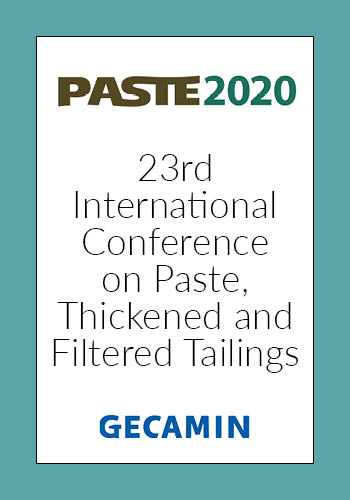Commission and Operation Experiences of Two Thickened Tailings Facilities

|
Authors: Wennberg, T; Stalnacke, A; Sellgren, A |
DOI https://doi.org/10.36487/ACG_repo/2052_32
Cite As:
Wennberg, T, Stalnacke, A & Sellgren, A 2020, 'Commission and Operation Experiences of Two Thickened Tailings Facilities', in H Quelopana (ed.), Paste 2020: 23rd International Conference on Paste, Thickened and Filtered Tailings, Gecamin Publications, Santiago, https://doi.org/10.36487/ACG_repo/2052_32
Abstract:
Luossavaara-Kiirunavaara AB (LKAB), an iron ore company with mines in northern Sweden is continuously considering new technologies for handling, transportation and disposal of waste rock and tailings. The mines and concentration facilities are located north of the Arctic Circle which in Scandinavia means an average temperature of about 0° C. Snow from mid-October to mid-May. In winter the temperature may reach -35 to -40° C during weeklong cold spells. At the Svappavaara mine early technical-economical feasibility considerations together with expected space limitations in the concentrator area favored location of two thickened tailings thickeners on a hill close to the disposal area about 1600 m away from the concentrating plant. In this way only short distance pumping of thickened slurry is required and warm process water is recovered directly by gravity from the thickener to the concentrating plant. A thickener of a high-density type with 18 m diameter was first installed. Four years later an additional thickener of paste type with diameter 24 m was put into operation. The design (maximum) capacities were 115 and 275 tph (tons per hour) for the 18 m and 24 m thickeners, respectively, with solids flux rates of 0.45 and 0.6 ton/m2h. Both are planned for common use for 390 tph within a few years. The tailings product is characterized by an average particle size of about 30 µm with a maximum of about 500 µm and about 40 % passing 20 µm. Solids density about 3000 kg/m3. A solids concentration by mass of 70 % was considered sufficient for deposition at a slope of up to 3 %. The objective is to present and discuss the performance of the thickening, transportation and deposition systems during the commission stages and first years of operation. The aim is also to describe how initial conditions related to changes in the tailings production rate together with climatic conditions called for robust by-pass arrangements. Furthermore, complicating factors related to the choice of auxiliary equipment and instrumentation for central functions are discussed.
References:
Knutsson R, Viklander P, Knutsson S, (2016) ‘Stability considerations for thickened tailings due to freezing and thawing’, Proceedings of the 19th Int. seminar on paste and thickened tailings, Santiago, Chile.
Töyrä S, Marthin P, Jokinen K, Lundell D, (2018) ‘Adjustments to tailings deposition with tailings in Svappavaara’. Int. conference Tailings and Mine Waste 2018, Colorado, USA.
Wennberg T, (2010) Transporting highly concentrated slurries with centrifugal pumps. The thickened minerals tailings example, Licentiate thesis, Dept. of chemical eng. geoscience and mineral processing, Lulea university of technology, Lulea, Sweden, www.ltu.se, ISBN 978-91-7439-169-5.
© Copyright 2025, Australian Centre for Geomechanics (ACG), The University of Western Australia. All rights reserved.
View copyright/legal information
Please direct any queries or error reports to repository-acg@uwa.edu.au
View copyright/legal information
Please direct any queries or error reports to repository-acg@uwa.edu.au